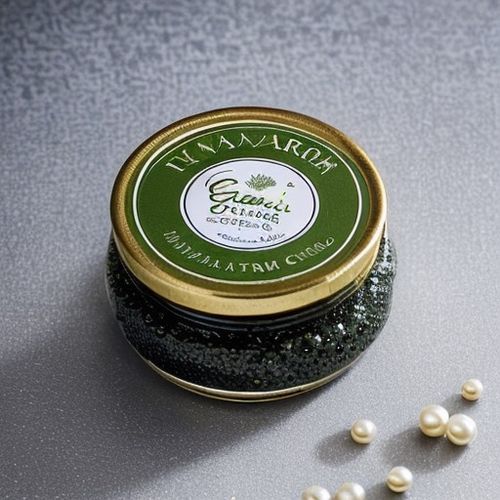Recent headlines proclaiming that Mexican chili peppers may hold cancer-fighting properties have sparked both excitement and skepticism within the scientific community. The study originating from Mexico's National Institute of Public Health suggests that capsaicin, the compound responsible for chili peppers' heat, could potentially inhibit the growth of certain cancer cells. While these findings make for compelling news stories, experts caution that the research remains in early stages and requires substantial further investigation before any definitive claims can be made.
The study in question examined how capsaicin interacts with cellular pathways involved in tumor growth. Researchers observed that the compound appeared to disrupt the energy production of cancer cells while leaving healthy cells unaffected. This selective mechanism has drawn particular interest from oncologists, as most current cancer treatments damage both malignant and healthy tissues. The Mexican research team reported observing these effects primarily in laboratory cell cultures and some animal models, focusing on specific types of cancers including certain prostate and breast cancer cell lines.
Historical context gives these findings particular significance in Mexico, where chili peppers have been cultivated and consumed for over 6,000 years. Traditional medicine in various Mesoamerican cultures has long attributed health benefits to chili peppers, though these claims were typically anecdotal. Modern scientific interest in capsaicin's potential medical applications began in the late 20th century, with previous studies examining its effects on pain management, metabolism, and cardiovascular health. The current cancer research builds upon this existing body of work while employing more advanced molecular biology techniques.
Several factors influence the credibility of these findings. The study underwent peer review before publication in a reputable scientific journal, and the research team has been transparent about their methodology. However, the sample sizes in some portions of the research were relatively small, and the effects observed, while statistically significant, were not overwhelmingly dramatic. The dosage required to produce anti-cancer effects in the laboratory setting far exceeds what a person could reasonably consume through diet alone, raising questions about practical applications.
International researchers have responded with cautious interest. Oncologists from the United States and Europe note that while the mechanisms described appear biologically plausible, many compounds show promising results in laboratory settings that don't translate to effective human treatments. The history of cancer research includes numerous examples of substances that demonstrated anti-cancer properties in vitro but proved ineffective or unsafe in human trials. This doesn't invalidate the Mexican study's findings but places them in proper context within the broader field of oncology research.
Nutrition scientists emphasize that even if future research confirms capsaicin's anti-cancer properties, chili peppers should not be viewed as a magic bullet against cancer. The complex disease involves numerous genetic, environmental, and lifestyle factors. A balanced diet rich in various fruits and vegetables has shown more consistent associations with reduced cancer risk than any single food item. The traditional Mexican diet, which incorporates chili peppers as part of diverse, plant-heavy meals, might offer more relevant health insights than isolating individual components.
Moving forward, the research team plans to investigate whether modified forms of capsaicin or delivery methods could make potential anti-cancer applications more feasible. Pharmaceutical approaches might include developing capsaicin derivatives that target cancer cells more efficiently or combining them with existing treatments to enhance effectiveness. These avenues would require years of additional research, including rigorous clinical trials, before any treatment could reach patients.
The study has nonetheless opened valuable new directions for cancer research. By better understanding how capsaicin interacts with cancer cell metabolism, scientists may identify previously unknown vulnerabilities in tumors. Even if capsaicin itself doesn't become a mainstream cancer treatment, the biological pathways it affects could inform the development of other therapies. This demonstrates how investigating traditional foods and folk remedies can sometimes yield unexpected scientific breakthroughs when approached with rigorous methodology.
Public health officials warn against overinterpreting preliminary findings. In Mexico, where chili pepper consumption is deeply culturally ingrained, there's concern that people might dramatically increase their intake based on overstated media reports. Excessive consumption can cause digestive issues and other health problems, particularly for individuals with certain preexisting conditions. Researchers stress that no one should attempt to self-medicate with chili peppers or abandon conventional cancer treatments based on these early-stage findings.
The media's tendency to sensationalize scientific studies has complicated public understanding of this research. Many news reports omitted crucial context about the study's limitations or the early nature of the findings. Some headlines implied that eating spicy foods could prevent or cure cancer, claims far beyond what the actual research suggests. This highlights the ongoing challenge of communicating complex scientific information accurately while maintaining public engagement.
From a scientific perspective, the study's strongest aspect may be its investigation of molecular mechanisms rather than its immediate clinical applications. By mapping how capsaicin influences specific cellular processes involved in cancer, the research contributes fundamental knowledge that other scientists can build upon. This type of basic science often forms the foundation for eventual medical advances, even if the path from laboratory discovery to practical treatment takes decades.
Funding and research infrastructure also play roles in assessing the study's credibility. Mexico's scientific community has made significant strides in recent decades, but researchers often face challenges securing consistent funding for long-term projects. International collaboration could help advance this line of research, combining Mexico's unique agricultural and cultural expertise with the extensive resources of larger global research institutions. Several U.S. and European universities have already expressed interest in partnering on follow-up studies.
The cultural significance of chili peppers in Mexico adds an interesting dimension to this scientific discussion. As one of the first domesticated crops in the Americas, chili peppers hold deep historical and symbolic value in Mexican society. The possibility that they might contribute to modern medicine resonates powerfully with many Mexicans, blending ancestral knowledge with contemporary science. This cultural connection has helped generate public support for the research while also requiring careful navigation to prevent misinterpretation of the findings.
Looking ahead, the most credible approach involves neither dismissing these findings nor overhyping them. The study represents a promising early step in a long research process, not a finished conclusion. As with many areas of scientific inquiry, the ultimate significance may lie in unexpected directions—perhaps not in chili peppers as a direct cancer treatment, but in what they reveal about cancer cell biology that could inspire entirely different therapeutic approaches.
For now, people can continue enjoying chili peppers as part of a balanced diet, knowing they're consuming a food with interesting (though not yet proven) potential health benefits. Scientists will persist in investigating these leads with appropriate rigor, while the public would do well to maintain realistic expectations about the pace of medical discovery. The journey from laboratory findings to effective treatments remains long and uncertain, but each quality study like this Mexican research represents meaningful progress.

By Elizabeth Taylor/Apr 10, 2025

By Laura Wilson/Apr 10, 2025

By Natalie Campbell/Apr 10, 2025

By Daniel Scott/Apr 10, 2025

By Sarah Davis/Apr 10, 2025

By Michael Brown/Apr 10, 2025

By George Bailey/Apr 10, 2025

By Thomas Roberts/Apr 10, 2025

By Sarah Davis/Apr 10, 2025

By William Miller/Apr 10, 2025

By Natalie Campbell/Apr 10, 2025

By Ryan Martin/Apr 10, 2025

By Benjamin Evans/Apr 10, 2025

By John Smith/Apr 10, 2025

By Grace Cox/Apr 10, 2025

By Victoria Gonzalez/Apr 10, 2025
By Natalie Campbell/Apr 10, 2025